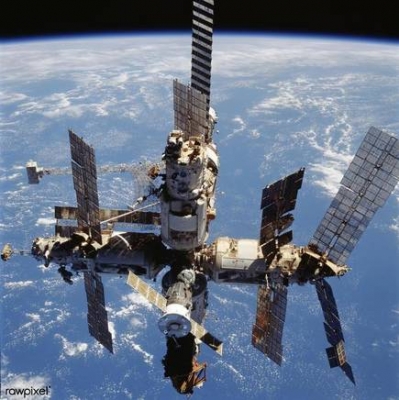
The International Space Station (ISS) is a habitable artificial satellite in low Earth orbit. A joint effort by participating space agencies, ISS serves as a space environment research laboratory. In terms of design, the ISS belongs to the third generation that allows modules to be added or removed from the existing structure, thereby allowing for greater flexibility.
The three generations
The first generation of space stations such as Soviet Union’s Salyut 1 and the U.S. Skylab had monolithic designs that consisted of one module with no resupply capability. The second generation of space stations, such as Soviet Union’s Salyut 6 and Salyut 7, consisted of a monolithic station, but with ports to allow resupply cargo spacecraft. The third generation, which are called modular space stations and now includes the ISS, correspond to those with more than one primary spacecraft that are launched independently and docked in space.
Soviet Union’s Mir space station marked the beginning of the third generation of space station design. The name “Mir” can be translated from Russian to mean “peace”, “world” or “village” – an apt choice for a space station that hosted people of various nationalities.
Different modules
On February 20, 1986, the assembly process began with the launch of Mir’s core module into orbit. Kvant 1 (1987), an astrophysics laboratory; Kvant 2 (1989), an augmentation module containing supplementary life-support equipment; Kristall (1990), a technology module that served as a materials-sciences lab; Spektr (1995), a power module that also allowed for remote observation of Earth’s environment; a docking module (1995); and Priroda (1996), Earth sensing module for experimenting with remote sensing; were the different modules launched and added to Mir over a decade.
Mir, however, started hosting humans even as more and more modules were added to it. Starting from March 1986, when the first crew docked with Mir, up until June 2000, when the last occupants left the space station, Mir received crew members from a number of expeditions. During its 15-year space flight, Mir played host to over 100 people from 12 different countries.
Exceeds expectations
When the Mir space station was designed and launched, it was built for a five-year life span. The Soviet Union broke down and Mir was operated by the new Russian Federal Space Agency after 1991, but it endured for almost another decade.
A series of problems, both technical and structural, caught up with Mir as years went on. Despite these failures and some accidents, it remained in operation. It was only in November 2000 that the Russian government decided to decommission the space station.
Planned re-entry
On January 24, 2001, a Russian Progress cargo ship carrying double the normal amount of fuel rendezvoused with Mir. Once the docking took place, Progress fired its thrusters to push the station into a controlled descent, thereby utilizing the extra fuel.
On March 23, 2001, Mir ceased to exist as it broke up in the Earth’s atmosphere upon re-entry. Airlines rerouted their Pacific flights and ships were warned ahead as a safety precaution. It proved to be unnecessary as the debris that did not burn up crashed into the south Pacific Ocean at the planned target zone, causing no harm to anyone.
Lucid’s tryst with Mir
On March 23, 1996, U.S. astronaut Shannon Lucid transferred to Mir from the space shuttle Atlantis for a planned five-month stay.
The first American woman to live in a space station, Lucid was also the first U.S. astronaut on an extended stay on the Mir.
As a biochemist, Lucid carried out a number of scientific experiments aboard Mir during her stay.
Her return was delayed owing to a number of reasons. She eventually made her return flight, again on Atlantis, and was back on Earth on September 26, 1996.
Her 188-day sojourn in space was a record then for time spent in space, both for women and Americans.
Picture Credit : Google

